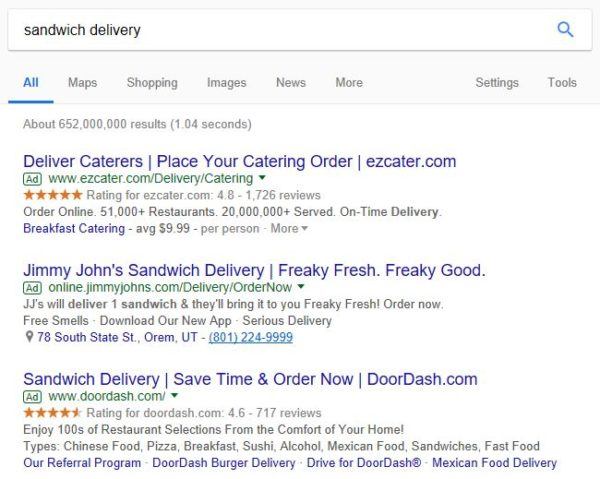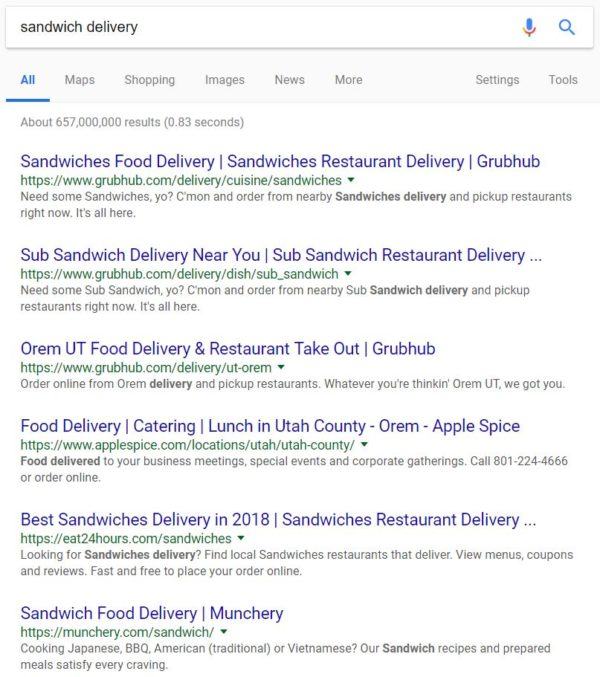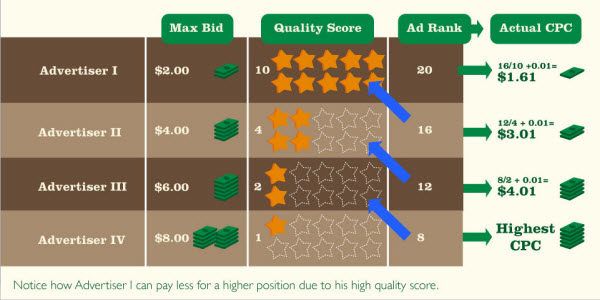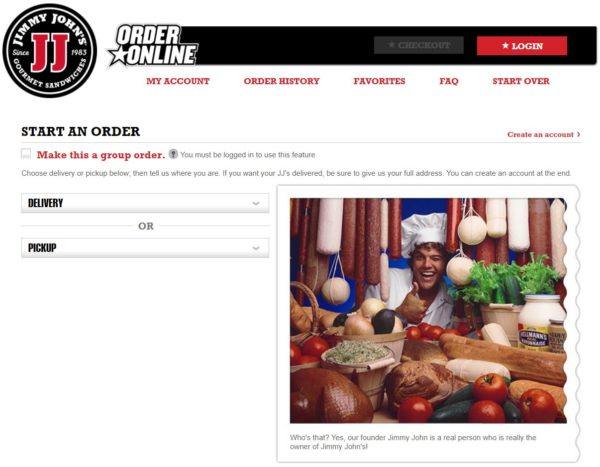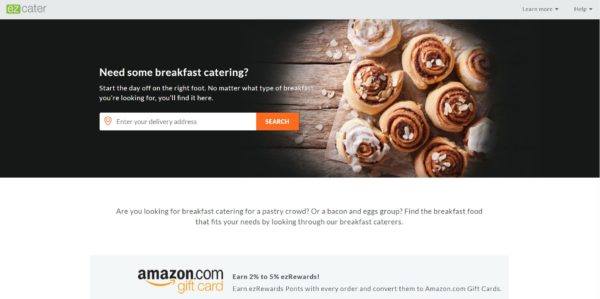Getting Started with Search Engine Marketing: SEM Made Easy
by Aden Andrus • January 15, 2019
When it comes to ranking on Google or Bing, everyone wants to be at the top of the search results—and for good reason. On average, 48% of clicks go to the top-ranked search result.
The good news is, there’s an easy way to get into that coveted #1 spot: search engine marketing.
Sure, you’ll have to pay to play, but with the right search engine marketing (SEM) strategy, you can reap all of the rewards of ranking well on Google or Bing—even if your site never actually ranks well organically.
Now, hopefully, with enough time and effort, you can rank well organically, too, but until that happens, search engine marketing is your key to getting to the top of the search results. To help you succeed, let’s take a closer look at SEM and how to use it to drive value for your business.
What is Search Engine Marketing?
To put it simply, search engine marketing is how you “pay to win” on the search engine results page (SERPs). Ideally, your site would rank well organically for every relevant Google or Bing search, but let’s be honest, if you’re not a big company, the SEO odds are not in your favor.
But…with search engine marketing, you don’t have to rank well organically to show up for relevant searches. Google and Bing let you pay to put ads for your company at the top of their SERPs.
For example, here’s what shows up at the top of the search results when I search for “sandwich delivery” on Google:
EZcater, Jimmy John’s and DoorDash all seem like good results for my search (I’m getting hungry just writing this), so there’s a good chance that I’ll click on one of these ads and make a purchase.
However, let’s delete the SEM ads and take a look at the organic results for my search:
EZcater and Jimmy John’s don’t even show up on the first page. DoorDash does, but it’s at the bottom of the page, so I’m unlikely to make it to them with so many good options at the top of the page.
In fact, statistically speaking, if you don’t rank in the top three organic spots for a search term, you have virtually no chance of getting clicks—regardless of whether you sell sandwiches or something else.
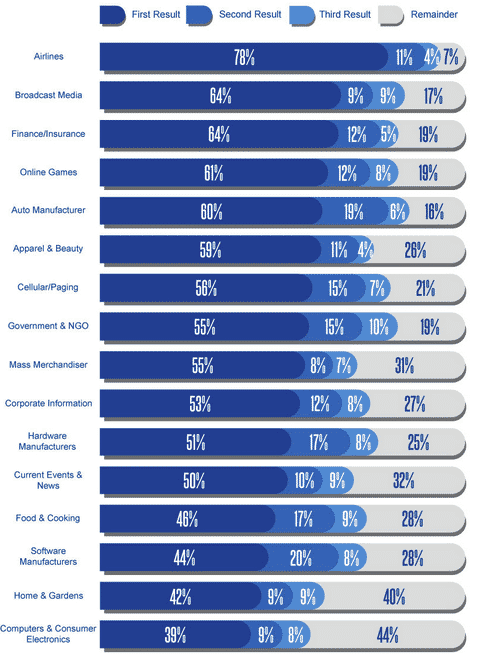
Image from Smart Insights.
So, in the example above, EZcater, Jimmy John’s and DoorDash normally wouldn’t have a chance at winning my sandwich order. With SEM, they’re my top options.
Essentially, running ads on Google or Bing allows you to “cheat the system.” You can rank for those high-value keywords that you wish you ranked for organically and reap all the benefits of showing up on the first page today. You don’t have to put months or years into trying to rank for a keyword and hope that everything works out—search engine marketing is pay to win.
SEM vs SEO
As you can see from above, you can rank on a search engine results page (SERP) either organically—because the search engine thinks your content is relevant to the search query—or by paying to have your ad display as a search result for the query. Ranking either way will get you clicks, but how you get those clicks matters.
Search Engine Optimization (SEO)
For organic, free clicks, you’ll need to do search engine optimization (SEO). SEO is all about engineering your content to make search engine algorithms happy.
There are a number of factors that play into how well a website ranks organically, including:
- Keywords and keyword density
- Link-building
- Content quality
- Website optimization
- Mobile optimization
- Interaction to your website from social media
- HTML formatting
While keywords and links are consistently the top two most important ranking factors for SEO, it takes a lot more than just keyword stuffing and random links to get your site to rank well organically. SEO takes months-to-years of consistent effort and time to produce real results.
That being said, once you do get it working, SEO can be an incredibly profitable way to drive traffic to your site, which is why 61% of marketers say improving SEO and growing their organic presence is their top inbound marketing priority.
Search Engine Marketing (SEM)
As we mentioned earlier, with search engine marketing, you pay to have your ads run at the top of the SERP. These ads are always listed above the organic search results and are marked in a way so that users know they are a paid ad.
This gives SEM several very important advantages over SEO:
- Ads rank immediately and you get immediate results
- Relatively simple to set up and use
- Easy to measure the ROI and see what works and doesn’t work
- Guaranteed at least some level of traffic
- When consumers are ready to purchase, 65% will click on a paid ad
- With data through tools like Google AdWords, you can find and define your target audience very specifically
- When paired with organic efforts, you have double brand exposure as your website can be listed twice on one SERP
Unfortunately, search engine marketing isn’t perfect, either. The most obvious drawback is that you have to pay for every click, but there are some other disadvantages to SEM as well:
- As soon as you stop the money, you stop the results
- Can get expensive, especially without proper monitoring, since you pay for every click and clicks don’t necessarily equal conversions
- Depending on industry, can be hard to compete against the big brands with large budgets
- Because they are labeled as an ad, many people skip over PPC ads entirely and go straight to the organic listings
Taking all of these advantages and disadvantages into account, how do you decide whether SEO or SEM is better for your business? Obviously, the easiest choice is to invest in both, but that often isn’t an option right off the bat, so which should you choose?
To answer that, consider the following:
1. What are My Goals?
Before making any sort of SEO vs SEM decision, it is critical to identify what your goals are. In other words, what does success look like to your business?
You’d be surprised how few people have a ready answer to that question.
Many businesses start investing in SEO or SEM simply because they know it’s an important venue for their products and services. However, they haven’t really identified what they are trying to achieve.
If your campaign goals don’t serve your business needs, you might as well give your money away.
The problem with the whole “if you build it, they will come” philosophy is that, yes, SEO or SEM can bring people to your site. But, if that traffic isn’t driving sales for your company, all you’ve built is a field of dreams.
Generally speaking, if your current goal is build brand awareness and increase traffic—but not necessarily sales—search engine optimization is the way to go. If you’re desperate for sales now, however, search engine marketing is your best friend.
2. What’s a New Customer Worth?
Both SEO and SEM are an investment. While organic clicks are technically “free”, you still invest a lot of time, effort and (if you hire someone to help) money into getting clicks from search engine optimization.
So, before you invest in either SEM or SEO, you need to make sure that your investment will pay off.
For example, while talking to a potential client, we asked what the lifetime value of a new customer was. Their answer? $100.
Unfortunately, after doing some research into the keywords we would need to target, we estimated that it would cost $40 to acquire a new customer through SEM. Since it cost their business $70 to take care of a new customer, each new customer would have cost the studio $10!
Obviously, SEM wasn’t the right fit for this business.
As a general rule of thumb, if it looks like SEM will produce at least $3 of new lifetime revenue for every $1 you spend on advertising, you should strongly consider investing in search engine marketing. Your campaigns will probably be break-even out of the gate and get better with time (for a quick and easy way to estimate customer lifetime value, check out our handy calculator here).
On the other hand, if it looks like you won’t be able to make $3 per $1 spent on SEM, search engine optimization is probably a better option for your business right now. You won’t get results as fast, but you won’t bankrupt your business investing in the wrong marketing channel, either.
3. What Can I Afford?
Of course, the above rule of thumb assumes that you can invest enough money to actually make your marketing work. Unfortunately, many businesses start with a small budget and big expectations, which is rarely a winning combination.
While there are exceptions to any rule, a good small business SEO budget should typically be around $1,000-2,000/month.
A good SEM budget starts at around $7,500/month.
Depending on your market, you can see some success with a smaller budget, but you typically get what you pay for. If you can’t afford to do SEM right, you can end up wasting money on a marketing channel that should produce profitable results, but doesn’t—simply because you can’t afford to invest enough money.
4. How Soon Do I Need Results?
Ultimately, “How soon do I need results?” is the most important question in the SEM vs SEO debate. Successful SEO takes time. You can get a successful SEM campaign up and running today.
Generally speaking, if you can wait 3-6 months for the campaign to really hit its stride, good SEO will generate much cheaper leads than SEM.
However, if—like most of us—you are in a rush for results, SEM is the better option. That speed comes at a cost, though. After all, that’s how search engine marketing works, remember? You pay to win.
Even if you have the time to wait for SEO to mature, you may still want to use SEM to test the viability of your SEO plan. If search engine marketing ads in the space you’re trying to enter don’t yield compelling results, SEO probably won’t either.
How Search Engine Marketing Works
Search engine marketing revolves around one fairly simple concept: the keyword auction process. Search engine marketing is a pay-per-click (PPC) advertising platform, which means you pay to drive traffic to your website and/or landing pages, but advertising on Google or Bing isn’t as simple as saying, “I want to pay X for every click.”
Unfortunately, you’re not the only business out there who wants clicks from people searching for what you’re selling. To make sure that your ads are seen, you have to outbid the competition.
The keyword auction process is a lot like any other auction, except that Google and Bing care about more than just your money—they also take the relevance and quality of your ads into account.
So, if you create high quality ads, you can potentially pay less per click than the competition…and still outrank them! (more on that in a bit).
Unlike display advertising, where you bid to have your ads displayed on various sites across the web, search engine marketers bid on specific keywords (like “sandwich delivery”) in the hopes of having their ads show up when potential customers search for those keywords on Google or Bing.
Depending on the quality of their ads and their maximum bid, the search engine decides what order ads are displayed to users in and then it’s up to your ad to catch a potential customer’s eye and convince them to click.
The Keyword Auction Process
No, search engine marketing doesn’t mean you’ll spend the rest of your career sitting in an auction house listening to John Giannandrea (Google’s head of search) rattle off keywords at high speed.
As fun as that is to imagine, the keyword auction process is much more efficient than that. Essentially, you pick the keywords you want to run ads on and enter the maximum amount you are willing to pay for a click.
That maximum amount is your “bid” for that keyword.
When someone does a search that includes one of your target keywords, Google/Bing compares all of the bids on that keyword and chooses who ranks where depending on how much they bid and how good their ad is. The good news is, since this is an auction, all you have to do is outbid the next lowest advertiser—you don’t actually have to pay your maximum bid every time someone clicks on your ad!
However, your maximum bid isn’t the only thing Google and Bing take into account when deciding where your ad will rank. They also take into account how well your ads and landing page match the intent of a search.
Quality Score
For Google Ads and Bing Ads to continue making money, users have to trust their search engine to guide them to relevant content. This applies to both organic and paid results, but we’ll leave SEO theory for another day.
When it comes to paid advertising, Google and Bing are sticking their necks out a bit for the advertisers. If your ad gets a lot of clicks and your website fails to deliver, that violates users’ trust. However, to make money, Google and Bing need people to pay for clicks, so they have to risk that some ads will let people down.
To mitigate this risk, search engines assign a quality score to ads. The point of quality score is to encourage advertisers to maintain user trust. A high quality score means that your advertising fits the search engine’s business objectives, a low score means you are violating user trust.
If your ad is good, the search engine rewards you with a lower cost-per-click. If your ad is bad, it punishes you, hopefully to the point where you remove or change the trust-breaking ad. Even if you leave the ad up, Google and Bing charge you a high enough premium for a low quality score that it offsets their risk of losing some user confidence.
Quality scores range between one and ten (ten is the best, one means your ad and/or landing page need some serious work). New keywords or keywords that haven’t had any clicks for a while have a “null” quality score, which just means that the search engine waiting for more information before they assign you a quality score (no penalty or reward).
Then, when your keyword is up in the auction, the search engine adjusts your “effective” maximum bid based on your quality score. This image from Wordstream does a good job of illustrating how this works.
As you can see in the example above, Advertiser I has a quality score of 10, which turns their max bid of $2.00 into an “effective bid” of $20 (Google/Bing haven’t ever told us exactly how this process works, so this is just an example to help you understand how max bid and quality score interact to produce ad rank).
In contrast, Advertiser II bid $4.00, which should beat Advertiser I’s bid of $2.00…except for the fact that Advertiser II’s quality score is only 4, so their “effective bid” is $16. As a result, Advertiser I outranks Advertiser II and pays less for each click than Advertiser II—all because of their great quality score!
Optimizing Your Quality Score
Clearly, it pays to have a high quality score, so you’ll want to make sure you’re doing what you can to optimize your quality score. Essentially, quality scores are assigned based on three related factors:
- Ad relevance
- Expected clickthrough rate (CTR)
- Landing page experience
Each of these factors is fundamental to how Google and Bing approach advertising, so let’s take a look at them in more detail.
Ad Relevance
As we mentioned earlier, Google and Bing put a lot of time, money and effort into ensuring that their search algorithms deliver highly relevant results. They want advertisers to do the same thing, so Google/Bing evaluates every ad and landing page to see if they are relevant to their target keyword.
For example, let’s take another look at our “sandwich delivery” search results. Which ads seem like a good match for our search?
Reading through EZcater’s ad, it doesn’t really seem all that relevant, does it?
“Deliver Caterers”? Honestly, I don’t know what that means (not good, confusing a potential customer is not a great way to earn clicks), but neither “Deliver Caterers” nor “Place Your Catering Order” sound like “sandwich delivery”, so I’m not likely to click on EZcater’s ad. It’s just not relevant to my search.
Odds are, while EZcater is in position #1, their quality score is probably terrible and they are paying way more than they need to for any clicks on their ad.
In contrast, take a look at Jimmy John’s ad: “Jimmy John’s Sandwich Delivery | Freaky Fresh. Freaky Good.” Sandwich delivery? Sounds like what I’m looking for. Freaky fresh and good? What more can you ask for?
Clickthrough Rate
Unlike EZcater’s ad, Jimmy John’s ad makes it clear that if you want a good sandwich delivered fast, they are the restaurant for you. Although DoorDash’s ad does say “Sandwich Delivery” in the headline, it’s pretty clear from the rest of their ad that I’ll still have to sort through all kinds of restaurant options just to get my sandwich.
Jimmy John’s ad is a lot more relevant, so it probably gets the majority of clicks from people who search for “sandwich delivery”.
Clickthrough rate (CTR) is the number of clicks your ad gets divided by the number of impressions (how many times people saw your ad) it gets. Since more relevant ads usually have a higher CTR, the CTR of your ads is used as an automated measurement of ad relevance.
Clickthrough rate isn’t the only factor Google and Bing take into account when deciding your quality score, but it is the most important factor.
To put it simply, the search engine compares your actual CTR to what it thinks your CTR should be (using their internal data). If your CTR outperforms their expectations, you get a better quality score. If your CTR is lower than expected, you get a ding against your quality score.
Landing Page Experience
Of course, it’s possible to have a highly relevant ad with a great CTR that points to a completely irrelevant landing page. Your landing page is the first place a user ends up after they click on your ad, so search engines want to make sure that your landing page is exactly what a searcher is looking for.
Here again, Jimmy John’s does a great job with their landing page experience. You click on their ad and end up on a page where you can start an order…exactly what someone interested in “sandwich delivery” is after!
Compare that with EZcater’s landing page:
No ordering options…no menu…no sandwiches! Does this seem like what we were looking for? Not by a long shot!
This landing page is for breakfast catering, which has nothing to do with “sandwich delivery”. A landing page experience like this will have potential customers hitting the back button so fast that even Jimmy John’s would call it “freaky”.
Overall, Jimmy John’s ad copy and landing page is so relevant to their target keyword that even though it is in position #2, there’s a good chance that they pay a lot less per click than EZcater (and probably less than DoorDash does for clicks in position #3).
In a nutshell, this is how search engine marketing works. You bid on a keyword that you think a potential customer would use to find your business, product or service. Then, based on how good your ad and landing page are, the search engine assigns it a quality score and combines that quality score with your maximum bid to determine your ad position and how much you’ll pay per click.
Of course, that’s just the beginning. Successful search engine marketing takes more than simply picking a few keywords, writing an ad or two and putting together a decent landing page. To really get into the details of how to succeed at SEM, check out this blog post or, you know…hire us to do it for you!
Is Search Engine Marketing Right for You?
When you get right down to it, search engine marketing is really just the “pay to win” version of search engine optimization. Your goal is to rank at the top of the search engine results page for relevant searches—SEM just gives you another way to do it.
The good news is, if you do it right, search engine marketing can deliver amazing results for your business. Overnight, you can get your ads in front of an incredibly relevant audience that is ready to buy today.
If that sounds like something you’re interested in, jump right in and get started! We’ve got all the content you need here on the Disruptive Blog to make you an SEM expert. Just check in with us any time you have a question.
What do you think? Have you invested in search engine marketing? Which SEM platforms have you used? What best practices work for you? Share your thoughts, knowledge, and experience in the comments below!


